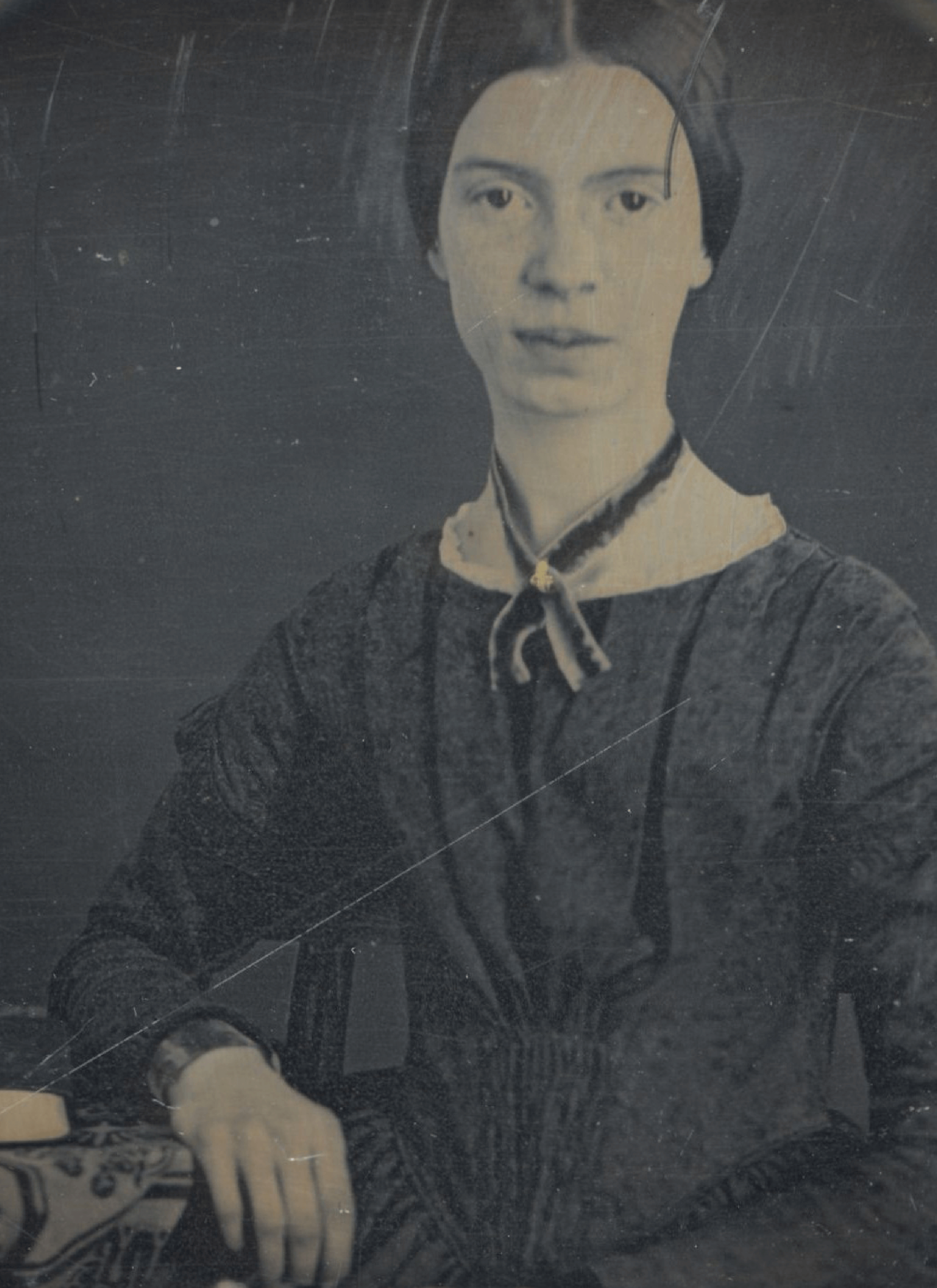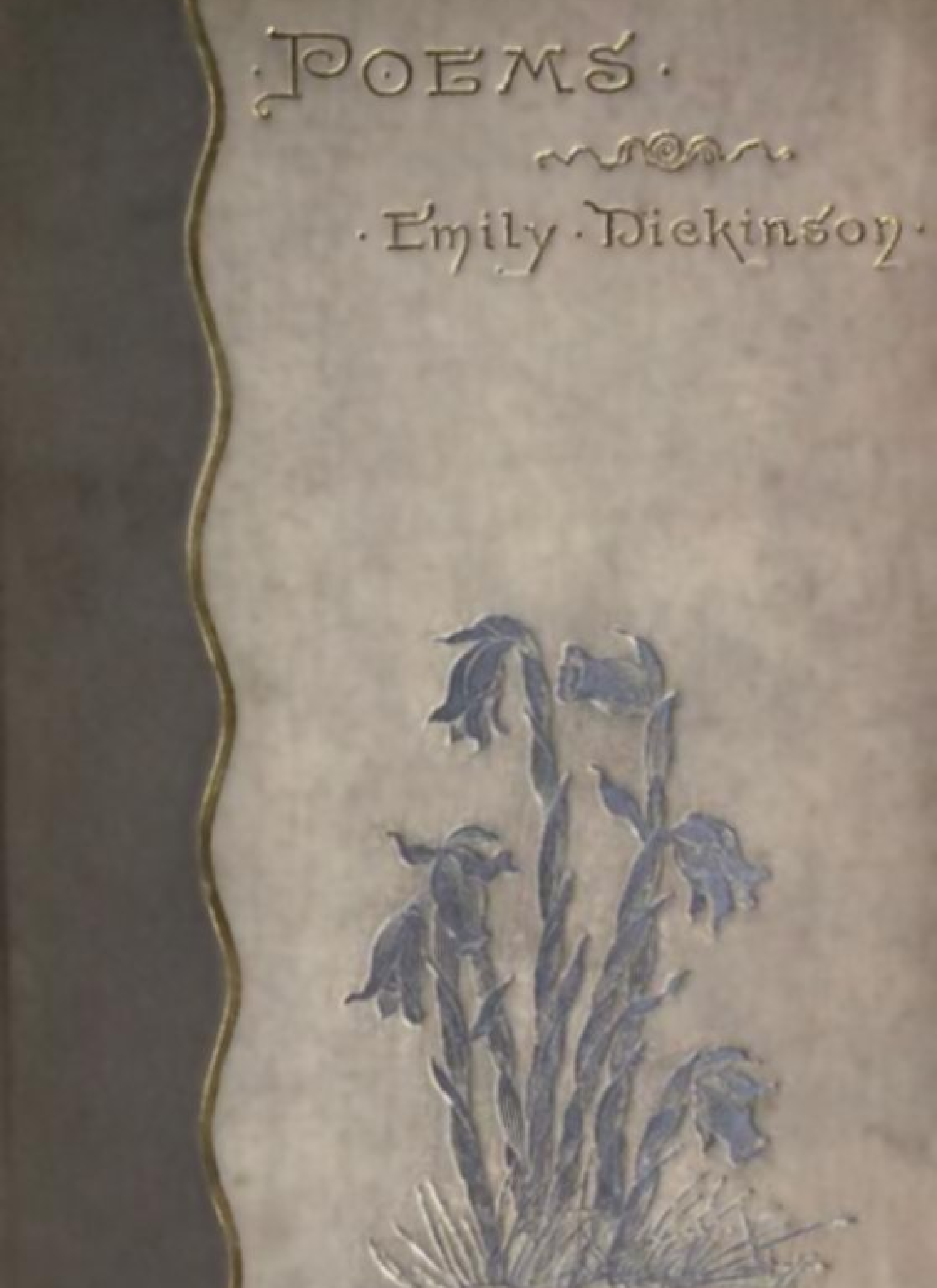Meet Emily Elizabeth Dickinson, responsible for creating an herbarium of 424 diverse specimens from Amherst, such as wild cucumber, passion flower, pigweed, pennyroyal, turtlehead, and grass of Parnassus.
Emily Elizabeth Dickinson was born in 1830 in Amherst, Massachusetts into a prominent family. As a child, Dickinson would wander the woods and return home with handfuls of beautiful wildflowers. Dickinson studied from age 9 to 16 at the Amherst Academy, an all girls’ school grounded with the mission to educate young women on piety, religion, and morality. It was here where Dickinson's studies in botany commenced and she began compiling her herbarium of dried, pressed plants that would eventually include 424 diverse specimens, such as wild cucumber, passion flower, pigweed, pennyroyal, turtlehead, and grass of Parnassus.
Dickinson then briefly attended a private liberal arts women's college, Mount Holyoke Female Seminary, in South Hadley, Massachusetts. Whilst away from home, she would write to her brother often, asking after the condition of her garden. She returned to her family home in Amherst at the age of 17.
The 424 flowers from the Amherst region, which Dickinson celebrated as “beautiful children of spring”, were arranged, with remarkable sensitivity to scale and visual cadence, across 66 pages, in a large, leather bound album. Although the original herbarium survives in the Emily Dickinson Room at Harvard’s Houghton Library for rare books and manuscripts, it is so fragile that even scholars are prohibited from examining it and the out-of-print facsimile is so prohibitively expensive that this miraculous masterpiece, an intersection of poetry and science, has, as a result, practically vanished from public attention. Recently, however, Harvard has digitised the herbarium in its totality.
It is believed that Dickinson lived most of her life in isolation. Best known for her prolific poems, only 10 of her nearly 1,800 poems were published during her lifetime. Though many of her acquaintances and friends knew she was a writer, it was only after her death, when her younger sister found the rest of her unpublished poems, that her work became public. When she turned 19, her father bought her a giant Newfoundland dog she named Carlo, with whom she would go roaming through the meadows and woods of Amherst.
Recurring motifs from flora and fauna appear throughout Dickenson’s many poems, which indicate a deep knowledge of the biology of the species mentioned, which she generally used as a personal symbol for herself, such as the wren, clover, and spider. Dickinson used her backyard garden as inspiration for her work. From early in her childhood until her death in 1886, Dickinson cultivated a passion for gardening and a joy in observing wildlife. The Dickinson estate, known as the Homestead, also included a barn, several acres of meadow, and a small greenhouse that became Dickinson’s Eden: a garden in a glass cocoon, which continued to flourish, even in winter. She filled the conservatory with some of her favourite plants, such as buttercups, ferns, wood sorrel, heliotropes, and jasmine.
Though she did not venture far, she took great pleasure and delight in her home-garden, writing in one letter: “My flowers are near and foreign and I have but to cross the floor to stand in the Spice Isles”. Dickinson frequently corresponded with friends and family, often sending them her poems, with which she would sometimes include the living creatures mentioned in her texts: a plucked blossom, or a dead cricket or bee, slipped into the envelope. She would also bind together flowers into small bouquets and send them to her fellow residents of Amherst, tying snippets of verse to the stems or hiding these amongst the petals.
In her 1,789 poems she refers to animals nearly 700 times, to plants almost 600 times, and to fungi four times. In her more than 350 references to flowers, the rose is most common (51 mentions), followed by daisies, clover, daffodils, and buttercups. She refers to birds 317 times, favouring the robin (47 mentions), closely followed in popularity by the bobolink, oriole, sparrow, blue jay, and blue bird.
Her passion for gardening continued until her death in 1886; indeed, before she died, she requested that her coffin be carried, at her funeral, through her flower garden, around the family’s barn, and over fields of buttercups, to the nearby town cemetery.

